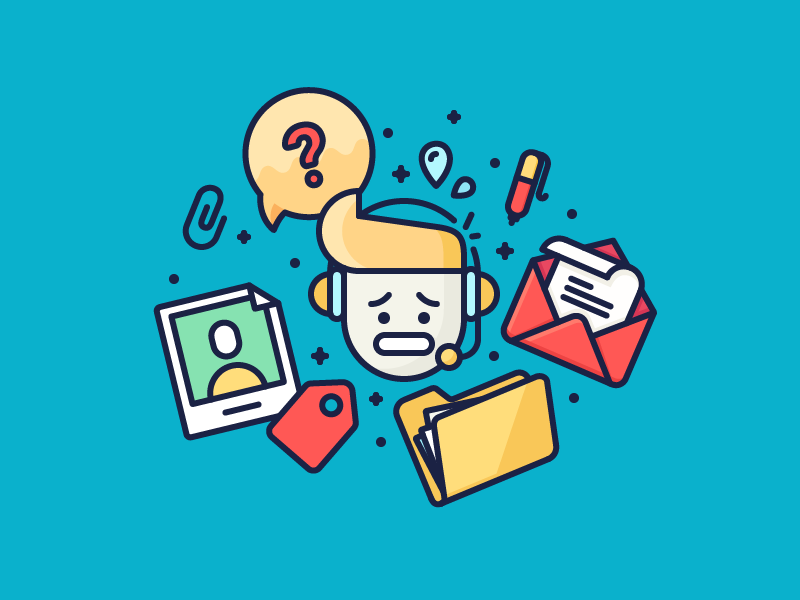
In the beginning, a large number of customer questions is a nice problem to have.
A lot of customer questions ≈ a lot of sales.
But, over time you start to receive the same questions again and again. This can quickly become a time-consuming, tedious daily task that may hinder the growth of your company.
A one person army is a lovely concept, and people do run 7-figure one-person businesses. But you will soon realize that you can’t handle it all on your own.
Sourcing your customer conversations to a virtual assistant is not a good solution but support optimization is, and that’s what successful businesses do.
You will not only have more time for your business, but your customers will be much happier as well.
Below are 8 ways to reduce your number of customer support emails without harming the quality of your customer service.
1. Set Clear Expectations
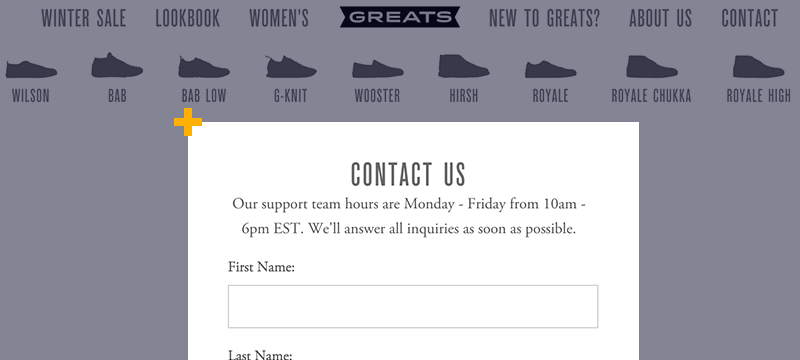
There’s nothing worse than being ignored.
We have all had customers who go crazy if they have been ignored. They multiply their ASAP emails and write reviews all over the internet about how careless you are.
This results in lost customers and potential prospects, and your business image is harmed.
If you let people know when they should expect the answer from you, this will make the waiting easier for them.
Note: If you can’t answer your emails the same day, let them know that all emails are answered within 48 hours. It’s better to allow more time than necessary, and if you answer sooner, that just makes your company look very efficient.
2. Don’t Hide Relevant Information
This is especially related to the dropshipping businesses.
Store owners wants to position themselves as a traditional business or popular superstores and tell dozens of white lies.
While dropshipping from China, people hide that their packages are shipped from Asia; that their product’s origin is Chinese; or that the shipping terms are longer than usual.
Don’t do that. Display relevant information multiple times where customers will likely read it.
Be Transparent. Trust requires honesty.
3. Create a FAQs Page

Customers want to help themselves. A whopping 91% say they would look for an answer in the FAQs page if it met their needs.
Let your customers look for answers to their questions themselves. Create an informative and searchable FAQs page. Invest in it.
It provides instant answers and drastically improves your inbox health.
Note: It’s not only a customer service tool. It’s the place where people show a clear deep interest in your product or service. Make it sell!
Tools for easy FAQs page management include Shopify, WordPress or HelpScout / GrooveHQ for every platform.
5. Include the FAQs in Transactional Emails
Transactional emails open rates are usually three times higher than commercial emails. And still, businesses use the standard and dull email notifications.
First, each standard letter prompts a question, for example:
- Customer Account Welcome: How long does the delivery take? / General Questions
- Order Confirmation: When will you ship my order?
- Shipping Confirmation: Where is my order?
- Delivery Confirmation: How do I return my order?
Answer those questions in advance. Use these massive open rates to your benefit. Cross-sell, up-sell or include social media buttons.
How to edit your transactional email campaigns: Shopify, BigCommerce, WordPress.
4. Create a “Track Your Order” Page
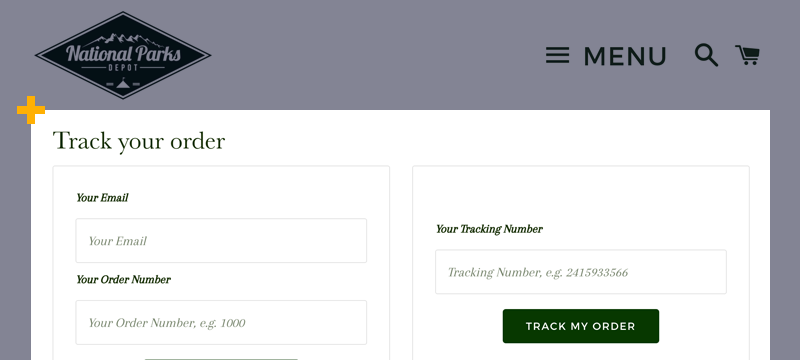
Usually, I get a shipping confirmation email which says, your tracking code is: 1234567890.
Why? Nobody wants to know what is their tracking code is. All we want to know is where our order is.
Answer this question by providing the ‘Track Your Order’ or ‘Tracking Page Link’ instead.
Generate dynamic links like www.17track.net/en/track?nums=[tracking code] or use separate Track Your Order integrations.
Tools for track your order page management: Shopify, WooCommerce, BigCommerce.
6. Use Answer Templates
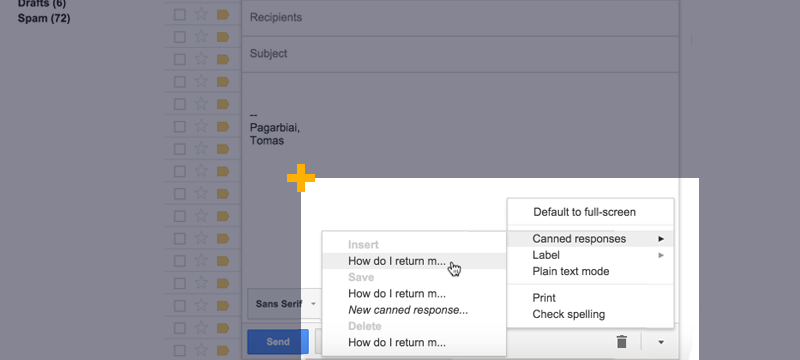
Even if you have enough time, you can’t write a perfect email response each time.
The perfect response should include a nice intro, a detailed answer, probably a screenshot, further reading links to FAQs page, and a closing section.
You already answered most of the questions before, so edit your answers and save them for later.
If it doesn’t look as personal as you want, then use them as templates. Don’t automatically send an answer template, read the question carefully, and edit the script to answer the question correctly.
Note: There are dozens of prepared answers scripts all over the internet.
Tools to manage answer templates: Gmail Canned Responses, HelpScout, GrooveHQ.
7. Use Auto-Responders
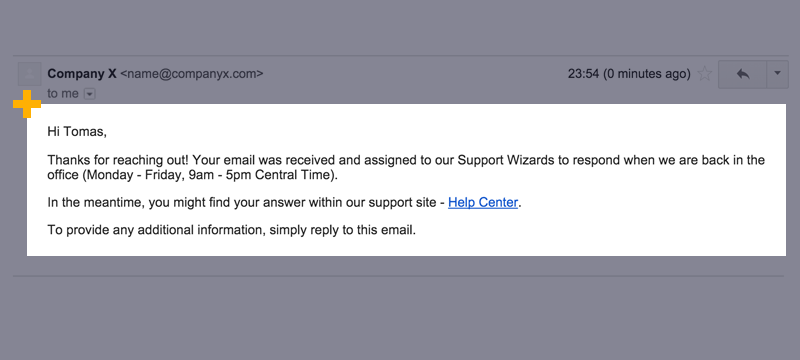
You write a question to a company and you keep getting dozens of auto-responders: Your Ticket #1111 was received, it was updated, it was answered, it was seen, customer rep turned on his PC and so on, and so on…
I hate these. The only good thing is that you can turn them off (if you’re using something like Zendesk) and customize then.
Don’t overuse auto-responders and be sure to make them sound natural.
For example: You claimed that questions are answered within 12 hours. It has been 24 hours and you haven’t answered one. Tell your customer “Sorry, due to the high volume of customer emails, we were unable to answer your email today. We will get back to you as soon as possible.”
If you are using standard auto-responders like Your Ticket Was Received, add more relevant information to it. Display a link to the most frequently asked questions or invite them to follow your Facebook page.
Tools to manage auto-responders: Gmail Auto Responder, HelpScout.
8. Prompt Customer-to-Customer Contact
Once you answer your customer question, the answer is lost.
Naturally, you can’t copy each of your answers to your FAQs page. Some questions are really specific.
Create a place to store those questions so other users can read them or add their own answers.
Most big shops do that, but it’s good to make it a habit from the very beginning.
A lot of customers are really chatty. Create a Q&A page or community forum, launch a Facebook group or prompt discussions on Twitter.
Let people publicly ask you questions and wait for other people to join in.
Conclusion
It’s really hard to be a true customer of your own business. But, the next time you write a business a question, ask yourself what you liked about the process and what could have been better.
Then implement those ideas in your own store.
Optimized and self-service support will not only lead to higher customer satisfaction, but they also allow you more time to concentrate on growing your business.
 Tomas Šlimas
Tomas ŠlimasTomas Slimas has recently sold his $3M dropshipping business and now helps store owners automate their dropshipping stores at Oberlo.




